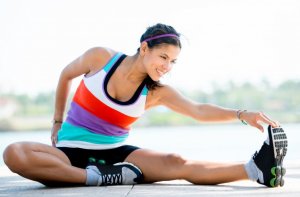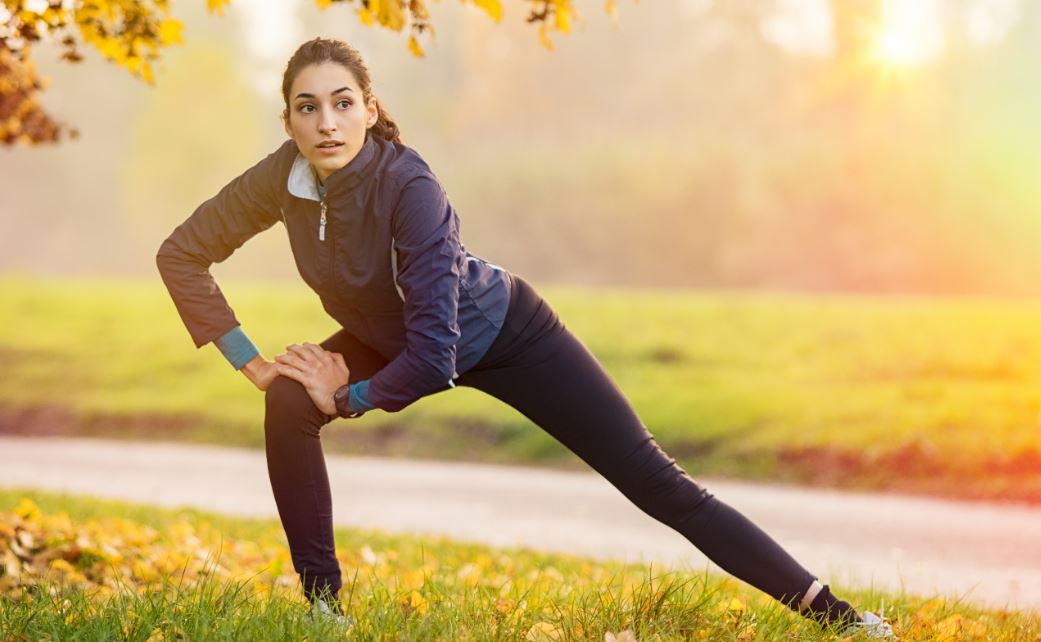The Importance of Stretching

Sometimes, when we exercise, we forget one of the most important parts of the process: stretching. This is as necessary for our bodies as exercising is. In order to help you to understand and introduce it into your routine, this article will explain the importance of stretching.
What is the importance of stretching?
Exercise, while healthy and beneficial for our bodies, is not the body’s natural state. Therefore, when you are in this state, your body undergoes modifications, which mean it then has to return to its initial pose.

These are some of the most important benefits of stretching:
- Prevents injury
- Helps to avoid sore muscles
- Eliminates muscle tension
- Prepares the body for exercise
- Reabsorbs lactic acid, helping to avoid fatigue
- Allows for a state of physical and mental relaxation after exercise
- Helps you to know your body better
If you do not stretch after exercise, your muscles may not recover from the tears that they suffered, which can cause injuries and result in grave consequences. Some of these consequences may include a chronic condition, such as tendinitis.
If it really is important to you, you will find a way. If it is not, you will find an excuse.
In addition to all these benefits, there are some others. For instance, stretching after each exercise will also improve your overall performance, because by making your muscles recover faster, it will strengthen them and prepare them for a new workout session.
How to stretch correctly
Although some people like to stretch before exercise, it is actually advisable to replace this stretch session with a warm-up session and stretch after the exercise instead. How do you stretch correctly? Here are some tips:
- Dedicate the necessary amount of time. It is important to stretch every muscle, regardless of whether you worked them out or not. In order to do this, you will need to spend some time on it, maybe ten minutes. So, make it a priority to carve some time out of your routine in order to stretch correctly.

- Use the correct position. Stretches should never be carried out in a static position, and never with sudden movements.
- Start from the bottom up. In order to stimulate your blood flow and to make sure that you do not forget any part of your body, it is best to start with your feet and finish with your head. Stretch your hamstrings, up to your quadriceps, abdominals, and neck, without forgetting your arms.
- Breathe and relax. Breathing is one of the key points for stretching. Breathe in as you complete each movement and breathe out as you stretch. Close your eyes, relax, concentrate, and breathe intensely several times.
- Pull on your muscles. Stretches are not simple movements, so you should feel pressure in your stretched muscle, but never any pain. If you do feel pain, you are probable stretching incorrectly.
- Each stretch should last around 30 seconds.
- If you feel that a muscle is not giving way and it hurts, it is possible you may have pulled it. Stop exercising and massage the area instead. Try to perform the stretch again slowly after a few seconds, without stopping the massage.
Despite the importance of stretching, there are certain situations under which you should not stretch:
- If you have a fracture or an injury
- Inflammation of the joints
- If you have osteoarthritis or any other disease that affects your bones.
- If you feel pain. When this happens, it is because something is not working well, so it is best to consult your doctor or physiotherapist to know what has happened and how to treat it.
As you can see, the importance of stretching after exercising is enormous, since it contributes largely to preventing injuries or illnesses that result from physical activity. If you do not know how to stretch, you can also ask a trainer at your gym.
Sometimes, when we exercise, we forget one of the most important parts of the process: stretching. This is as necessary for our bodies as exercising is. In order to help you to understand and introduce it into your routine, this article will explain the importance of stretching.
What is the importance of stretching?
Exercise, while healthy and beneficial for our bodies, is not the body’s natural state. Therefore, when you are in this state, your body undergoes modifications, which mean it then has to return to its initial pose.

These are some of the most important benefits of stretching:
- Prevents injury
- Helps to avoid sore muscles
- Eliminates muscle tension
- Prepares the body for exercise
- Reabsorbs lactic acid, helping to avoid fatigue
- Allows for a state of physical and mental relaxation after exercise
- Helps you to know your body better
If you do not stretch after exercise, your muscles may not recover from the tears that they suffered, which can cause injuries and result in grave consequences. Some of these consequences may include a chronic condition, such as tendinitis.
If it really is important to you, you will find a way. If it is not, you will find an excuse.
In addition to all these benefits, there are some others. For instance, stretching after each exercise will also improve your overall performance, because by making your muscles recover faster, it will strengthen them and prepare them for a new workout session.
How to stretch correctly
Although some people like to stretch before exercise, it is actually advisable to replace this stretch session with a warm-up session and stretch after the exercise instead. How do you stretch correctly? Here are some tips:
- Dedicate the necessary amount of time. It is important to stretch every muscle, regardless of whether you worked them out or not. In order to do this, you will need to spend some time on it, maybe ten minutes. So, make it a priority to carve some time out of your routine in order to stretch correctly.

- Use the correct position. Stretches should never be carried out in a static position, and never with sudden movements.
- Start from the bottom up. In order to stimulate your blood flow and to make sure that you do not forget any part of your body, it is best to start with your feet and finish with your head. Stretch your hamstrings, up to your quadriceps, abdominals, and neck, without forgetting your arms.
- Breathe and relax. Breathing is one of the key points for stretching. Breathe in as you complete each movement and breathe out as you stretch. Close your eyes, relax, concentrate, and breathe intensely several times.
- Pull on your muscles. Stretches are not simple movements, so you should feel pressure in your stretched muscle, but never any pain. If you do feel pain, you are probable stretching incorrectly.
- Each stretch should last around 30 seconds.
- If you feel that a muscle is not giving way and it hurts, it is possible you may have pulled it. Stop exercising and massage the area instead. Try to perform the stretch again slowly after a few seconds, without stopping the massage.
Despite the importance of stretching, there are certain situations under which you should not stretch:
- If you have a fracture or an injury
- Inflammation of the joints
- If you have osteoarthritis or any other disease that affects your bones.
- If you feel pain. When this happens, it is because something is not working well, so it is best to consult your doctor or physiotherapist to know what has happened and how to treat it.
As you can see, the importance of stretching after exercising is enormous, since it contributes largely to preventing injuries or illnesses that result from physical activity. If you do not know how to stretch, you can also ask a trainer at your gym.
All cited sources were thoroughly reviewed by our team to ensure their quality, reliability, currency, and validity. The bibliography of this article was considered reliable and of academic or scientific accuracy.
- Ayala, Francisco, P. Sainz de Baranda, and Antonio Cejudo. “El entrenamiento de la flexibilidad: técnicas de estiramiento.” Revista andaluza de Medicina del Deporte 5.3 (2012): 105-112.
- Fuentes, P. Calle, et al. “Los efectos de los estiramientos musculares:¿ qué sabemos realmente?.” Revista Iberoamericana de Fisioterapia y Kinesiología 9.1 (2006): 36-44.
This text is provided for informational purposes only and does not replace consultation with a professional. If in doubt, consult your specialist.








